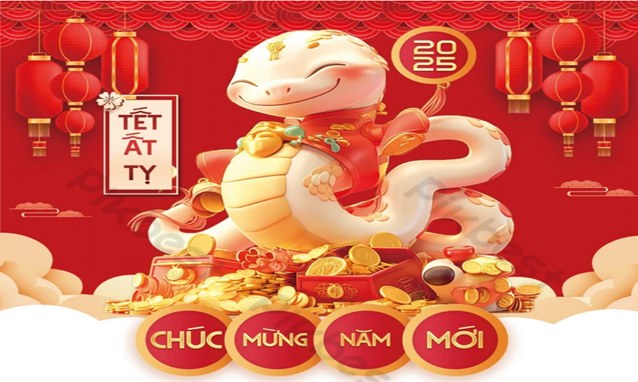2019-04-10, 11:17 PM

Người về qua cõi phù vân ... Nghiêng vai trút gánh phong trần bỏ đi...
|
Ask A Monk: Meditation Q&A
|
|
2019-04-26, 05:42 PM
ẤN ĐỘ - HÀNH TRÌNH VỀ MIỀN ĐẤT BỊ LÃNG QUÊN
( The India Journeys - The oblivion land ) - PART 01
2019-05-09, 10:40 PM
ẤN ĐỘ - HÀNH TRÌNH VỀ MIỀN ĐẤT BỊ LÃNG QUÊN
( The India Journeys - The oblivion land ) - PART 03
2019-05-22, 10:54 PM
ẤN ĐỘ - HÀNH TRÌNH VỀ MIỀN ĐẤT BỊ LÃNG QUÊN
( The India Journeys - The oblivion land ) - PART 04
2019-05-29, 09:26 PM
ẤN ĐỘ - HÀNH TRÌNH VỀ MIỀN ĐẤT BỊ LÃNG QUÊN
( The India Journeys - The oblivion land ) - PART 05
2019-06-05, 10:52 PM
2019-06-10, 11:18 PM
2019-06-20, 10:09 PM
LỄ DÂNG ĐÈN THERAVADA – THE LIGHT OFFERING CEREMONY
Theo truyền thống văn hóa tại Việt Nam , chúng ta không hiếm gặp những lễ hội đốt đèn, dâng đèn trong các chùa chiền. Thông thường là người Phật Tử hay làm lễ Cầu An, Cầu Siêu nên dâng cúng nhang đèn nhằm giải hạn( cúng sao) hay cầu mong cho người quá cố. Thật sự trong truyền thống của Phật Giáo Nguyên Thủy Theravada không có các quan niệm ấy. Hầu hết nghi lễ này do ảnh hưởng rất nhiều từ nền văn hóa của Trung Hoa. Xuất hiện Nghi lễ cầu siêu này thực sự chỉ bắt đầu từ đời vua Lương Vũ Đế (464-549) qua lễ Từ Bi Đạo Tràng Sám Pháp và Lễ Thủy Lục Không pháp hội siêu độ. Đến đời vua Đường Minh Hoàng (685-762) Lễ Thủy Lục Không trở nên rất phổ biến và trở thành nghi lễ chính thức để cứu độ những người chết trong chiến tranh và lễ này được truyền qua Việt Nam sau đó.
Đức Phật đã từng dạy rằng, mọi sự Hạnh Phúc , Giàu sang , Đau khổ đến với mình đều là do LUẬT NHÂN QUẢ Theo truyền thống của các nước phật giáo Theravada như Sri Lanka, Myanmar, Thailand, Cambodia…và Việt Nam. Vẫn có những lễ hội dâng đèn thường vào sau ba tháng mùa an cư của chư tăng ( Tháng 6 –Tháng 9 Âm Lịch ) gọi là lễ Vặc Sa ( Vassa) . Các Phật tử thường dâng cúng và đốt đèn trong các ngôi chùa để dâng lên cúng Phật và các bảo tháp thờ Xá Lợi Phật. Họ quan điểm là cúng dường ánh sáng sẽ được TRÍ TUỆ soi sang cho chính mình và mọi người xung quanh ( có lẽ là ngày xưa chưa có đèn điện, nên dâng cúng đèn đến Phật và Chư Tăng là một Thiện Pháp cúng dường ). Thông thường người Phật tử sẽ đến chùa vào những đêm rằm , đốt những ngọn nến xunh quanh tượng Phật và xin Chư Tăng Thọ trì Tam Qui và 5 hoặc 8 Giới và nghe chư Tăng Tụng Kinh và giảng Pháp nhằm mang lại Hạnh Phúc cho mình trong ngày vị lai. Cúng dường bậc đáng cúng, Chư Phật hoặc đệ tử, Các bậc vượt hý luận, Ðoạn diệt mọi sầu bi. ( Pháp Cú -195) Mục đích của đèn là tỏa ra ánh sáng. Giúp cho người sử dụng thấy được những vật xung quanh. Do đó, việc thắp đèn cúng dường Phật được hiểu là tự soi sáng chính mình, chiếu sáng kẻ khác; nghĩa là Phật tử đem những lời dạy từ trong kinh điển của đức Phật áp dụng vào cuộc sống, dùng thân giáo làm tấm gương sáng cho mọi người học theo, noi theo, để cùng nhau được giải thoát. Những quả Phước của việc cúng dường đèn cho Tam Bảo có thể hiểu như sau : 01. Trở thành ngọn đèn của pháp giới; 02. Đạt được trí tuệ thấu suốt thiện pháp và bất thiện pháp; 03. Luôn sống trong ánh sáng trí tuệ; 04. Có được tái sinh trong thân người hay chư thiên; 05. Vui hưởng cuộc sống giàu sang phú quý; 06. Sớm được giải thoát; offering of light extinguishes darkness, it symbolically represents the way in which wisdom dispels ignorance. By offering light to the Buddha, one also offers light to themselves. In general, all the collections of goodness of samsara and nirvana are the result of having made offerings to the Buddha, Dhamma, Sangha. In particular, one receives different benefits by doing service with each of the various individual offerings. Buddha, the Fourth Guide, whose holy mind is enriched with the ten powers, that there are ten benefits of making light offerings: One becomes like the light in the world. One achieves the devas' eye. One receives the wisdom of knowing what is virtue and what is non-virtue. One is able to eliminate the darkness of ignorance, the concept of inherent existence. One receives the illumination of wisdom, even in samsara one never experiences darkness. One receives great enjoyment wealth. One is reborn in the deva or human realms. One quickly attains enlightenment. In the Theravada Buddhism country, example Sri Lanka, Myanmar, Thailand, Cambodia, and VietNam.. The Makha Bucha commemorates the full moon day which falls on the third lunar month of the year. Though sources differ slightly, it is generally believed the festival originates from the first sermon given by Lord Buddha, nine months after his Enlightenment, when 1,250 monk disciples appeared spontaneously to hear him speak. The celebrate the full moon anniversary, Buddhists have been visiting temples to hear sermons and perform good deeds. The most spectacular event though, is the candlelit procession where Buddhists and monks carry a lighted candle, flowers and an incense stick in a clockwise direction around temples. These items represent the Three Jewels of Buddhism: the Buddha, his teachings and the monkhood.
2019-07-17, 10:19 PM
|
|
« Next Oldest | Next Newest »
|




